
TREAT.
RECOVER.
EXCEL.
Give your body the care it deserves and feel stronger, freer, and more energised every day

Cassie Barry
Registered Nurse, Sports Massage Therapist, and proud mum based in Tadpole Garden Village and Highworth, Swindon.
I’m neurodiverse, love rugby, crafts, Disney, and spending time with my family.
At CB Massage Therapy, I combine medical knowledge with a caring touch to help you move better, feel stronger, and find balance.
Select a treatment to learn how I can help may help...














































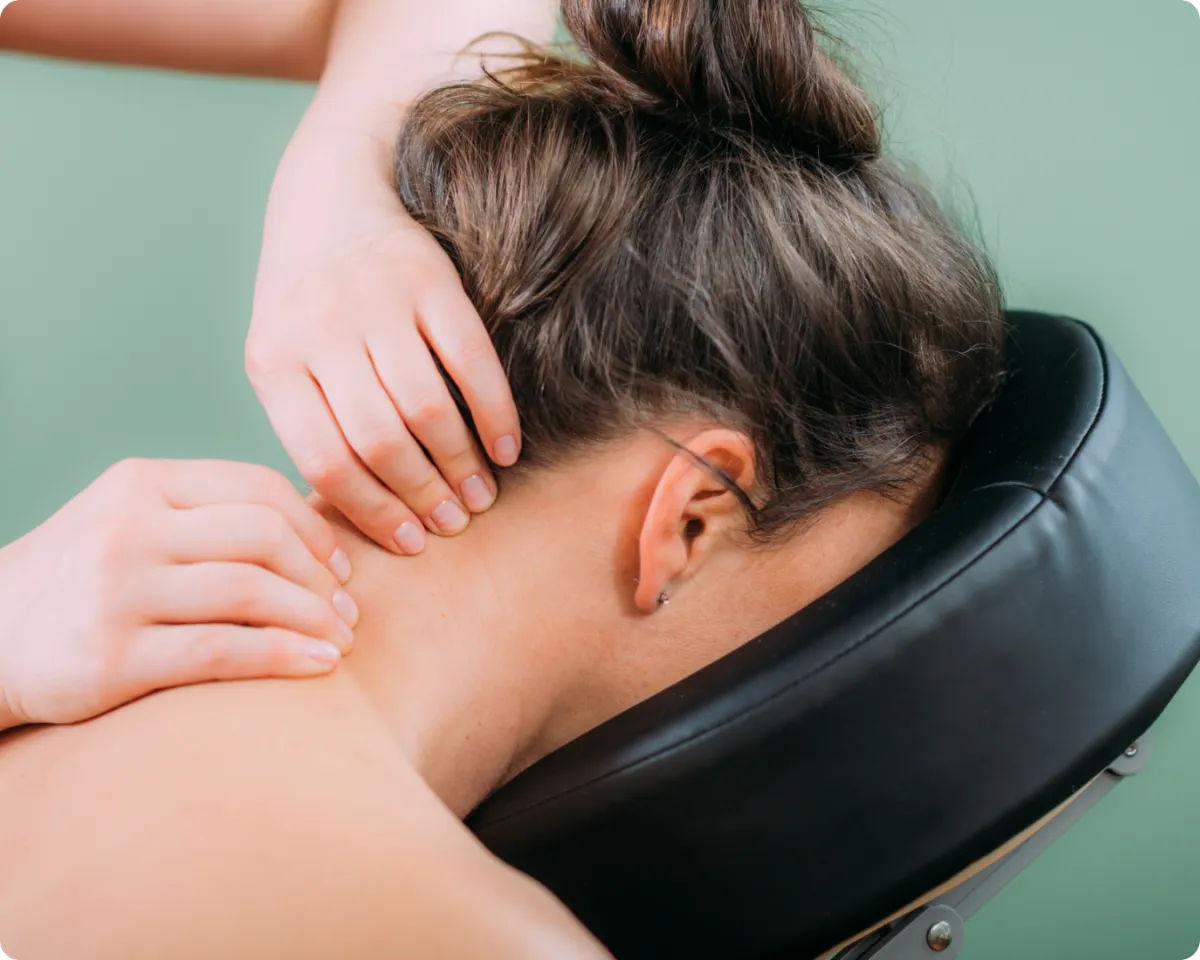
Indian Head Massage – £35 (30 min)
Perfect for those who carry stress in the upper body, Indian head massage focuses on the scalp, face, neck, back and shoulders. The key areas where tension and fatigue build up most. The techniques help raches, pains and stiffness while promoting healthy circulation and a calm nervous system.
This treatment not only reduces physical tightness but also has a grounding effect, helping to clear the mind and lift mental fog. The result is deep relaxation, mental clarity, and a sense of lightness ideal for anyone seeking stress relief in a short yet powerful session.
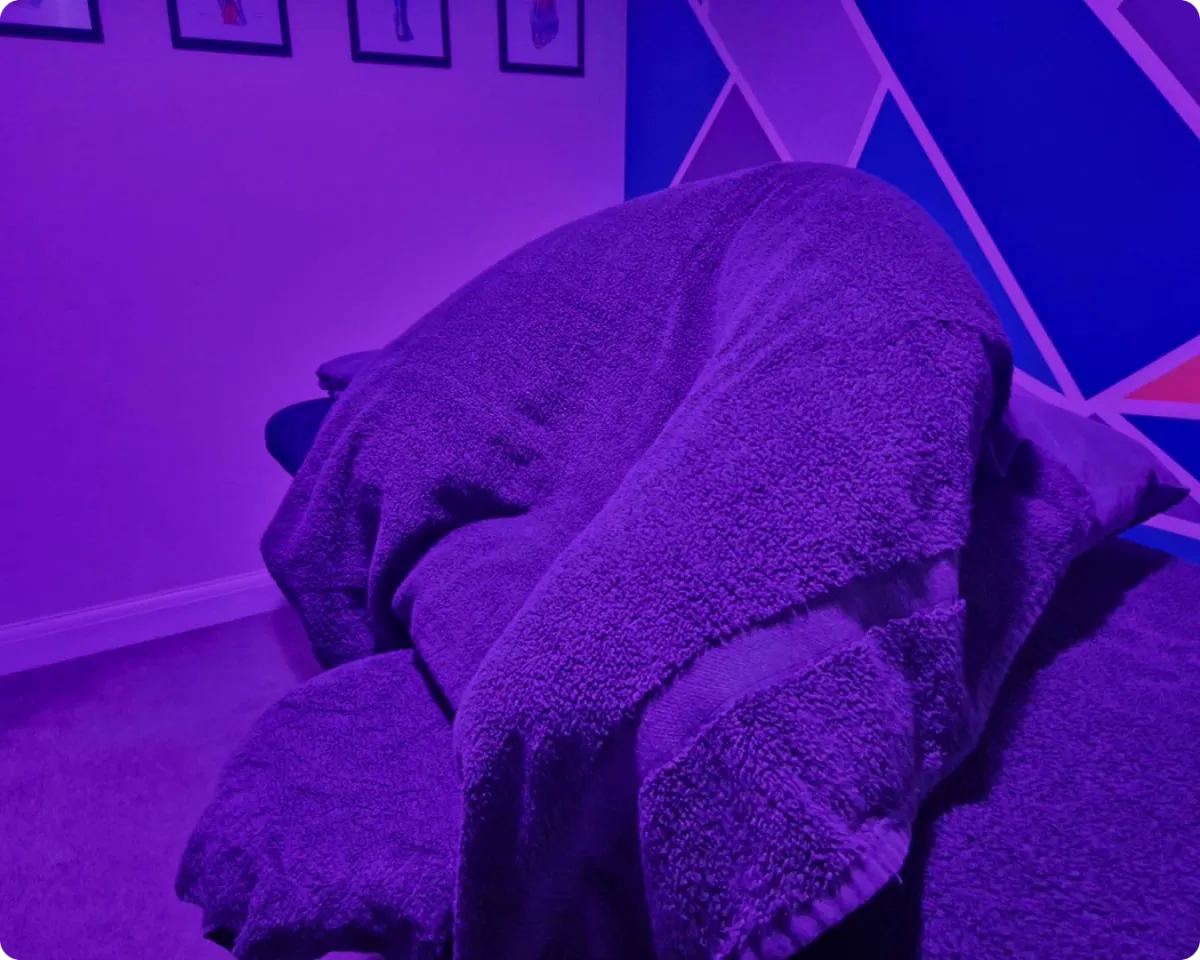
Pregnancy Massage – £50 (60–75 min)
Pregnancy brings amazing changes to the body, but it can also cause physical strain, discomfort, and fatigue. This specially adapted massage is safe, gentle, and tailored to the unique needs of the mother-to-be. Using supportive positioning and soothing techniques, it relieves common pregnancy pains such as backache, swollen joints, and leg cramps.
Beyond physical relief, pregnancy massage improves blood circulation, helps reduce swelling, stabilises hormonal levels, and promotes deeper relaxation. Treatments can even prepare the body for an easier labour by releasing tension and encouraging a sense of calm. It’s a nurturing and restorative experience for both mother and baby.
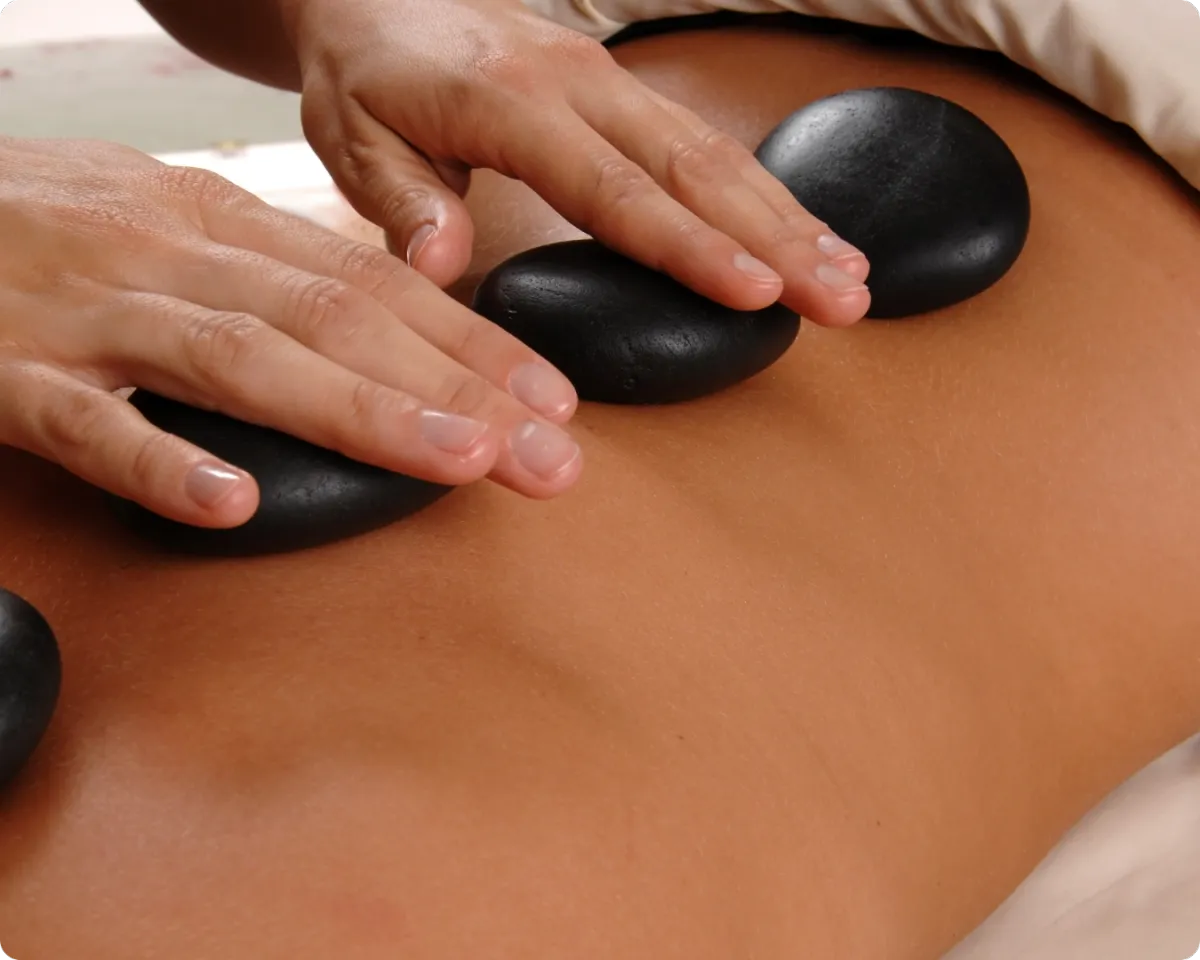
Hot Stones Massage – Coming Soon
Hot stones massage combines the soothing power of heat with the therapeutic benefits of massage. Warm basalt stones are placed on the body and used by the therapist to ease muscle stiffness, boost circulation, and calm the nervous system.
This treatment can be enjoyed as a deeply relaxing stand-alone massage, or combined with sports massage to provide an even more effective way of relieving muscular pain and tension. A comforting, restorative experience to look forward to.
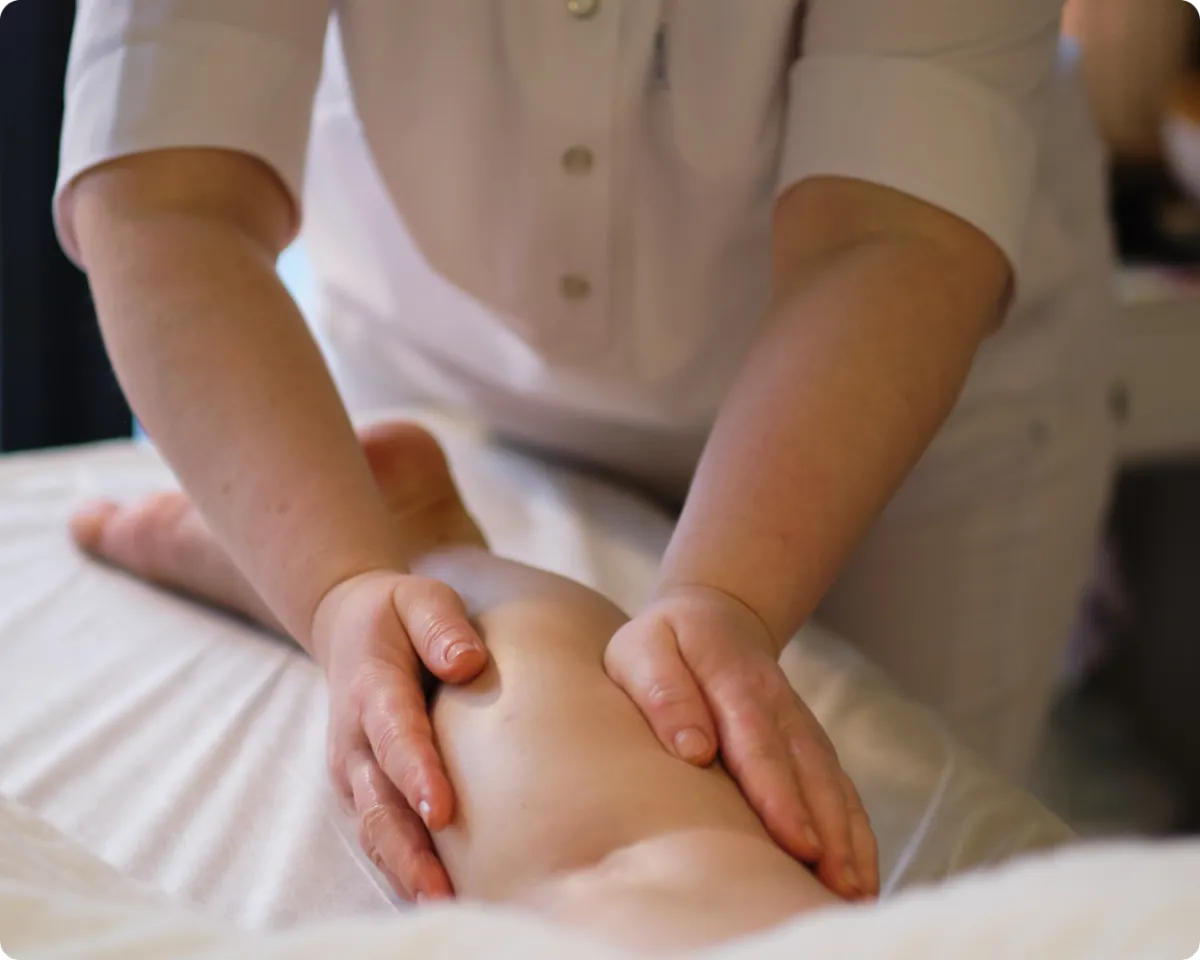
Manual Lymphatic Drainage Massage – £50 (60 min)
Manual Lymphatic Drainage (MLD) is a gentle, rhythmic massage that supports one of the body’s most vital systems: the lymphatic system. Its role is to remove waste, toxins, and excess fluid, but it can often become sluggish after illness, surgery, or long-term health conditions.
MLD encourages the natural flow of lymph, reducing swelling, improving circulation, and enhancing the body’s ability to heal and detoxify. It is particularly effective for:
Lymphoedema
Managing swelling and improving comfort.
Post-operative recovery
Reducing fluid retention, speeding up healing, and softening scar tissue.
Oncology patients
Providing gentle, supportive relief during or after treatment.
This massage not only relieves heaviness and puffiness but also strengthens immunity, calms the nervous system, and restores a sense of balance and wellbeing.

Full Body Deep Tissue Massage – £50 (60 min)
For those carrying chronic muscle tension or stress, this full body deep tissue massage offers powerful release. Using slow, deliberate strokes and sustained pressure, it works deep into the layers of muscle and connective tissue to ease knots, improve flexibility, and restore movement.
Unlike lighter relaxation massages, this technique goes further, tackling the root causes of discomfort caused by stress, poor posture, or repetitive strain. Whether you’re recovering from intense activity or simply feel weighed down by tension, this treatment leaves you feeling renewed, rebalanced, and restored.
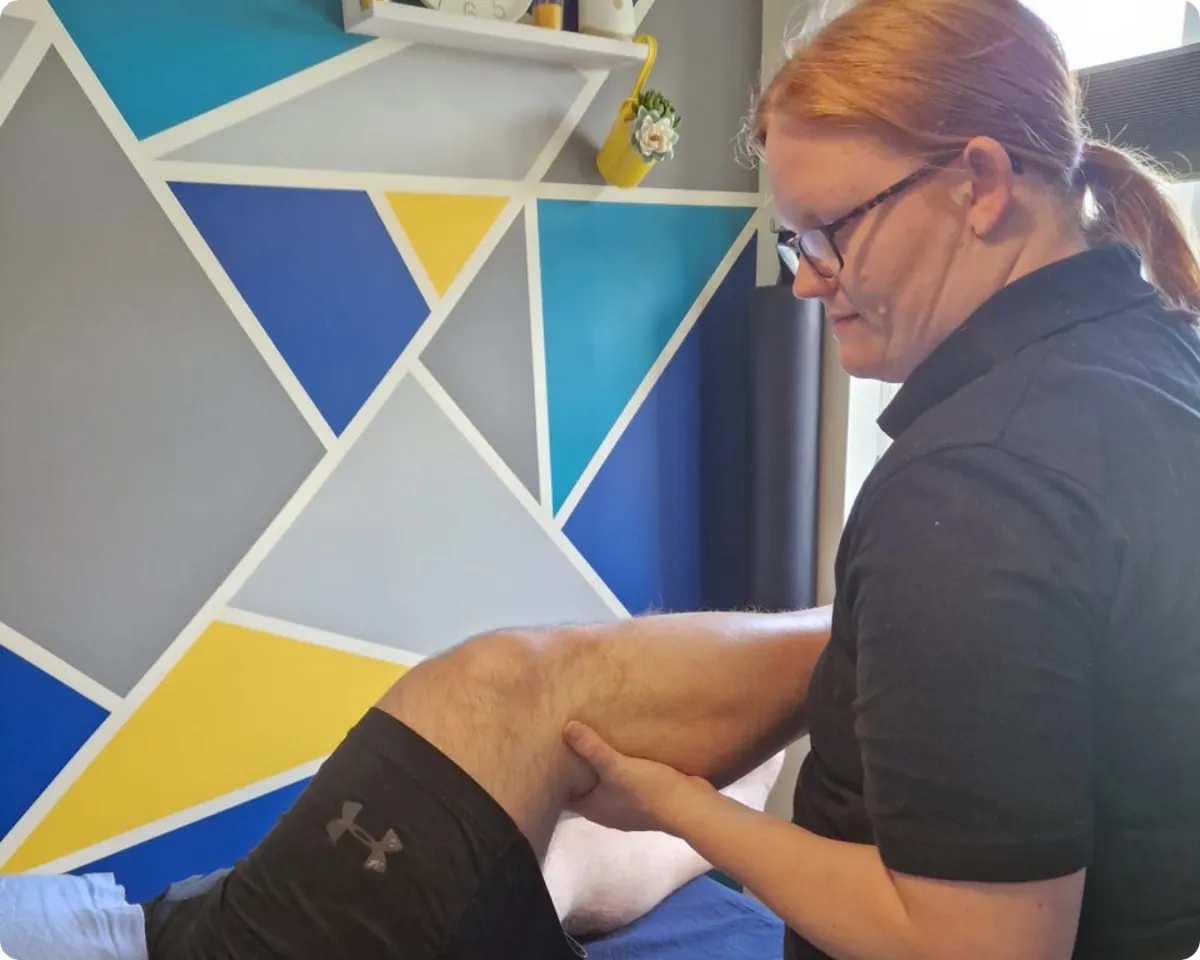
Sports Therapy Massage – £45
(45 min treatment with 15 min assessment)
Sports massage isn’t just for sporty people, it’s for anyone dealing with life’s aches and pains. From long hours at a desk and repetitive work strain to stress-related tension and poor posture, everyday life takes its toll on the body. This treatment begins with a detailed assessment of your posture and soft tissues, allowing us to identify imbalances or areas of concern.
The massage itself uses deep tissue techniques to release fascia, ease muscular tension, and promote postural correction. By targeting problem areas directly, it encourages quicker recovery, greater flexibility, and improved movement patterns, helping you feel lighter, looser, and more in control of your body
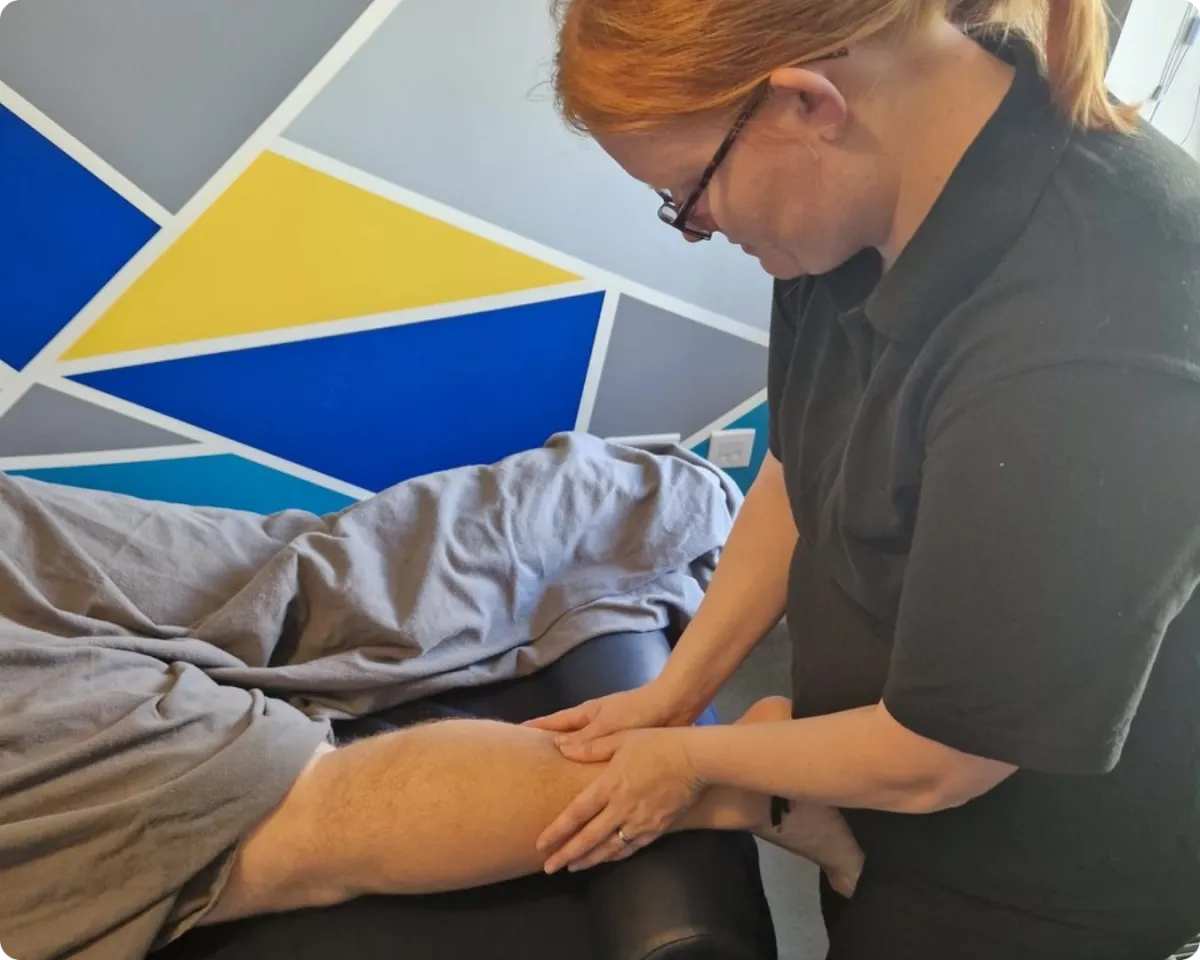
Pre-Event Massage – £25
(30 min)
Getting your body ready before a big event or physical challenge is just as important as the training itself. Pre-event massage is vigorous yet carefully controlled it warms the muscles, boosts blood circulation, and stretches the right muscle groups to enhance performance and reduce the risk of injury.
This treatment wakes up your body, sharpens your focus, and builds energy, ensuring you’re physically and mentally prepared to give your best. It works particularly well when booked within a week of your event and can make a noticeable difference if scheduled right before you start.
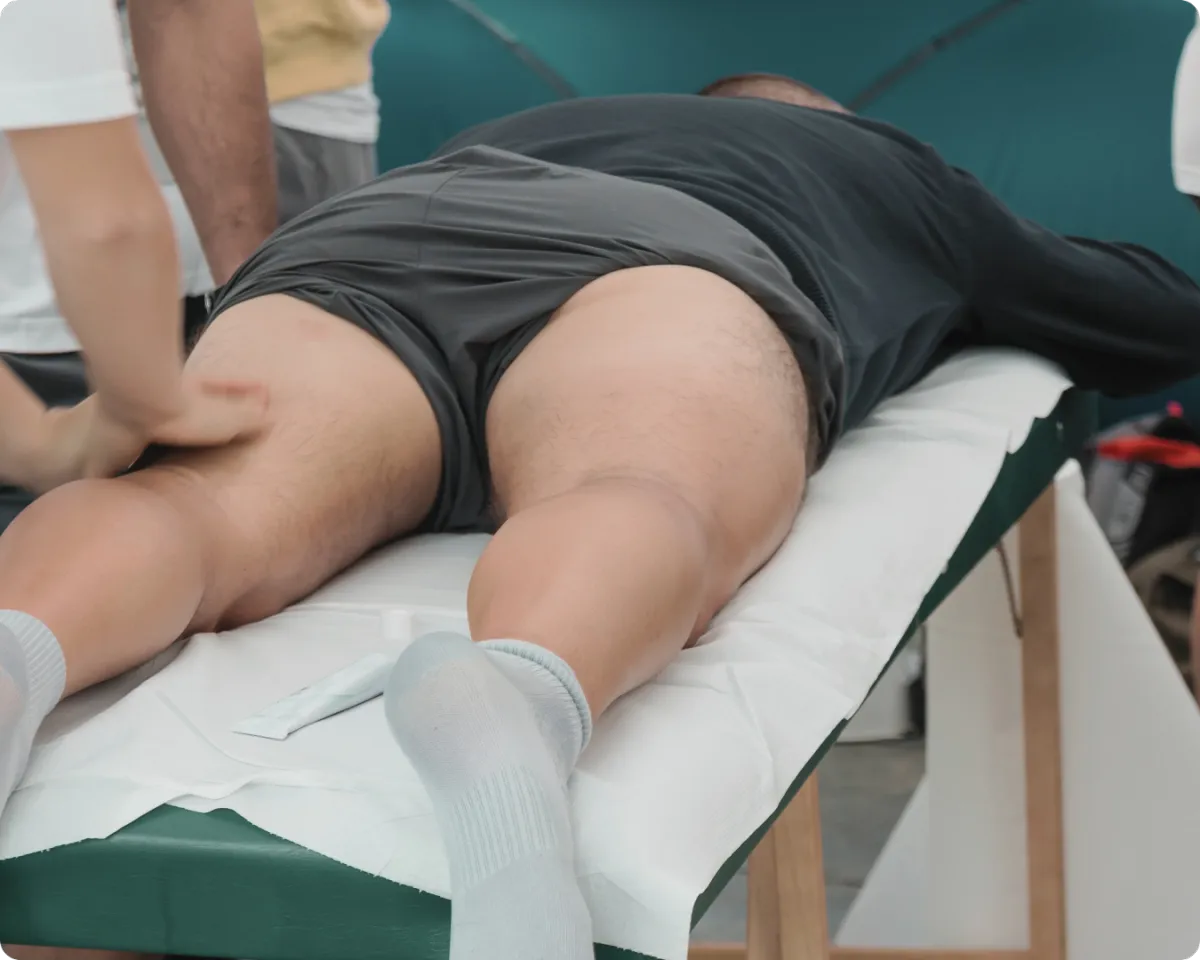
Post-Event Massage – £25
(30 min)
After pushing your limits, your body needs time and a little help to recover properly. Post-event massage is slower, more rhythmic, and deeply soothing. It eases muscle soreness, reduces stiffness, and helps clear metabolic waste that builds up during exercise.
This treatment supports faster recovery, restores balance to your muscles, and allows you to return to training or everyday life with less discomfort. It’s the perfect way to help your body reset and repair after any sporting event, endurance challenge, or even an unusually demanding day.
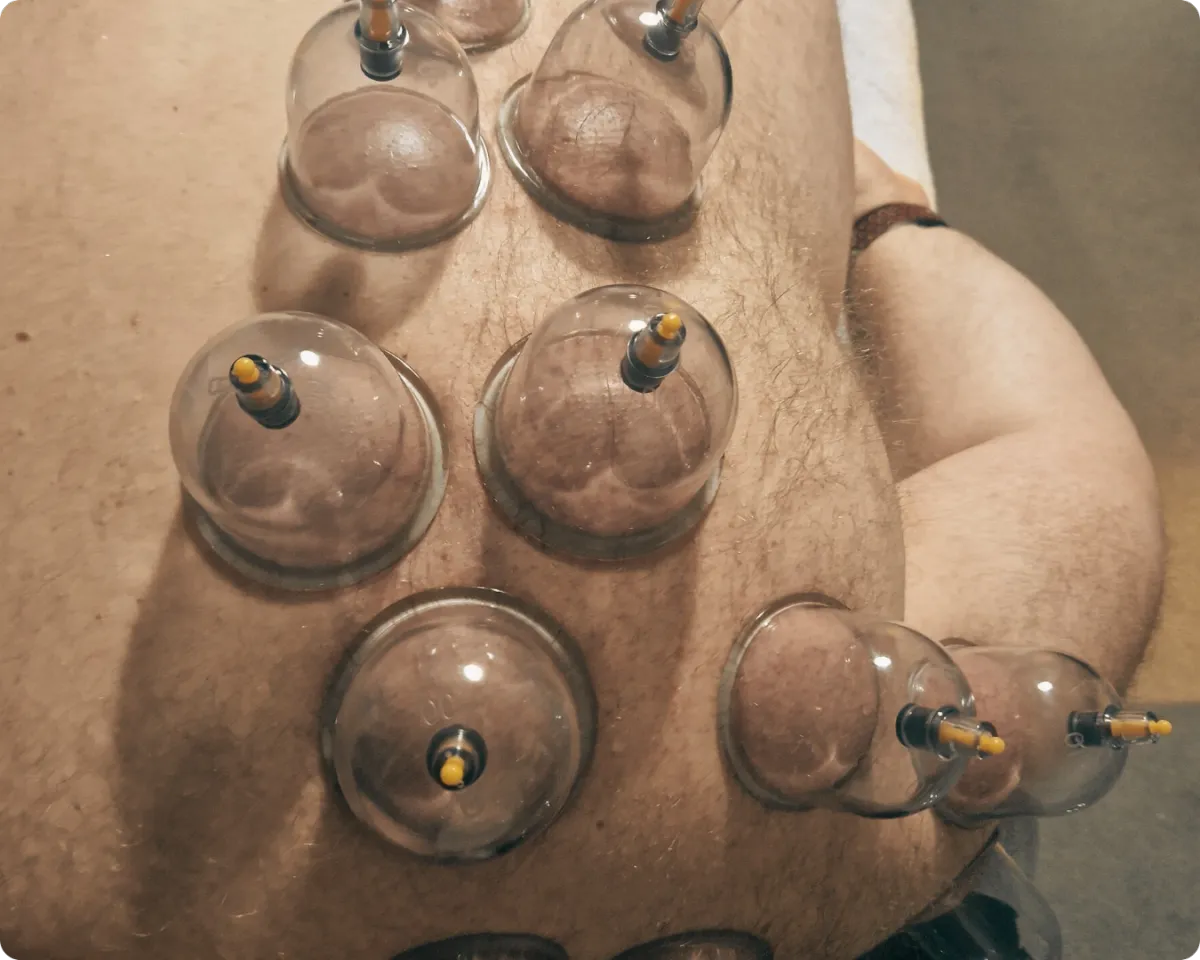
Myofascial Cupping
Myofascial cupping is a therapeutic technique that can be incorporated into your sports massage session to target particularly tight or shortened muscles. By creating a gentle suction on the skin, the cups lift and separate the fascia and underlying tissues, increasing blood flow, improving mobility, and reducing restrictions.
This technique is especially effective for releasing stubborn tension that traditional massage alone may not fully address. The result is greater freedom of movement, reduced discomfort, and quicker recovery.
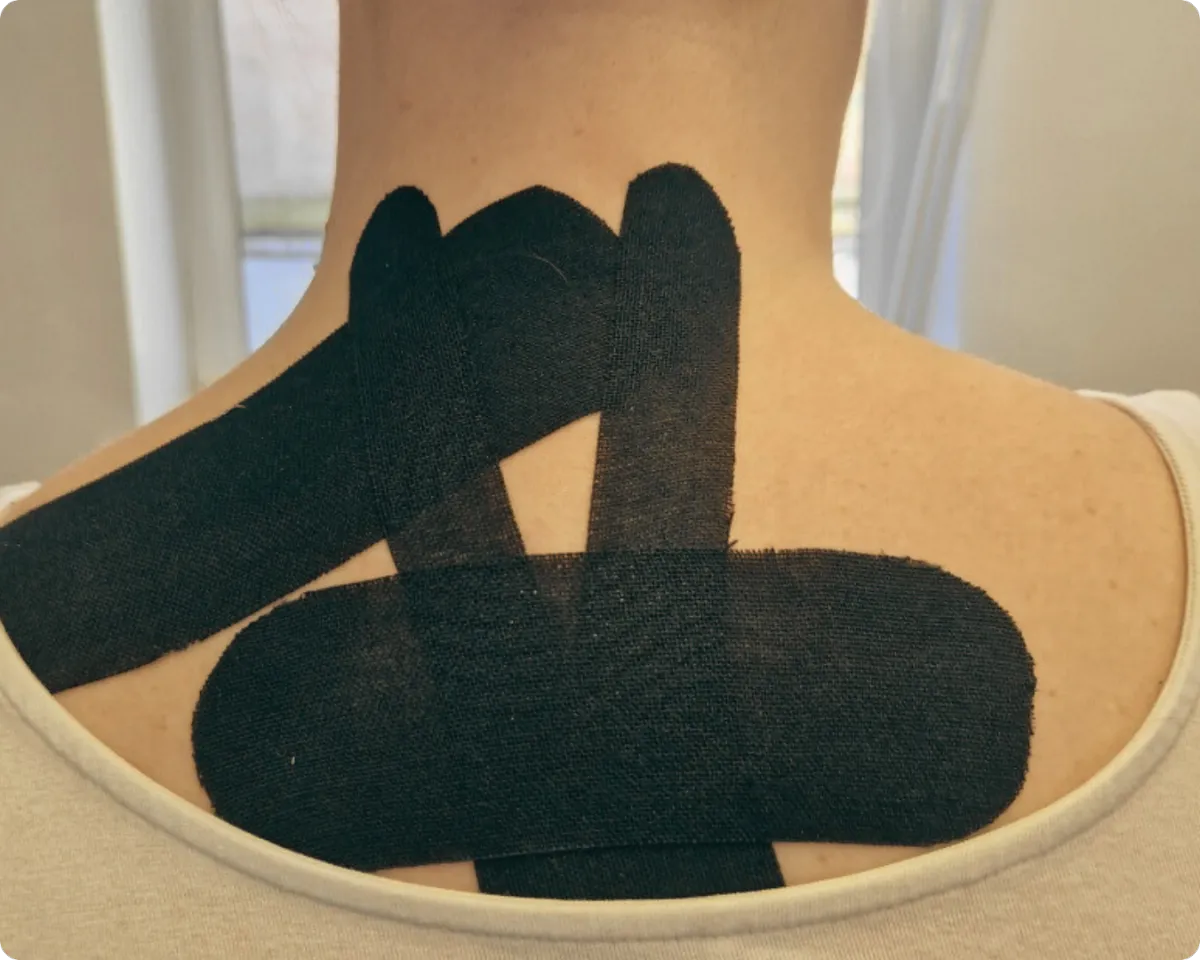
Kinesiology Taping
Kinesiology taping is a supportive technique often used alongside rehabilitation and recovery treatments. Elastic therapeutic tape is applied directly to the skin to gently support muscles, joints, and connective tissue without restricting movement.
The tape encourages blood and lymphatic flow, reduces inflammation, and promotes the body’s natural healing processes. Ideal for sporting injuries, postural support, or recovery after strain, kinesiology taping provides ongoing assistance long after your appointment.
Client Testimonials
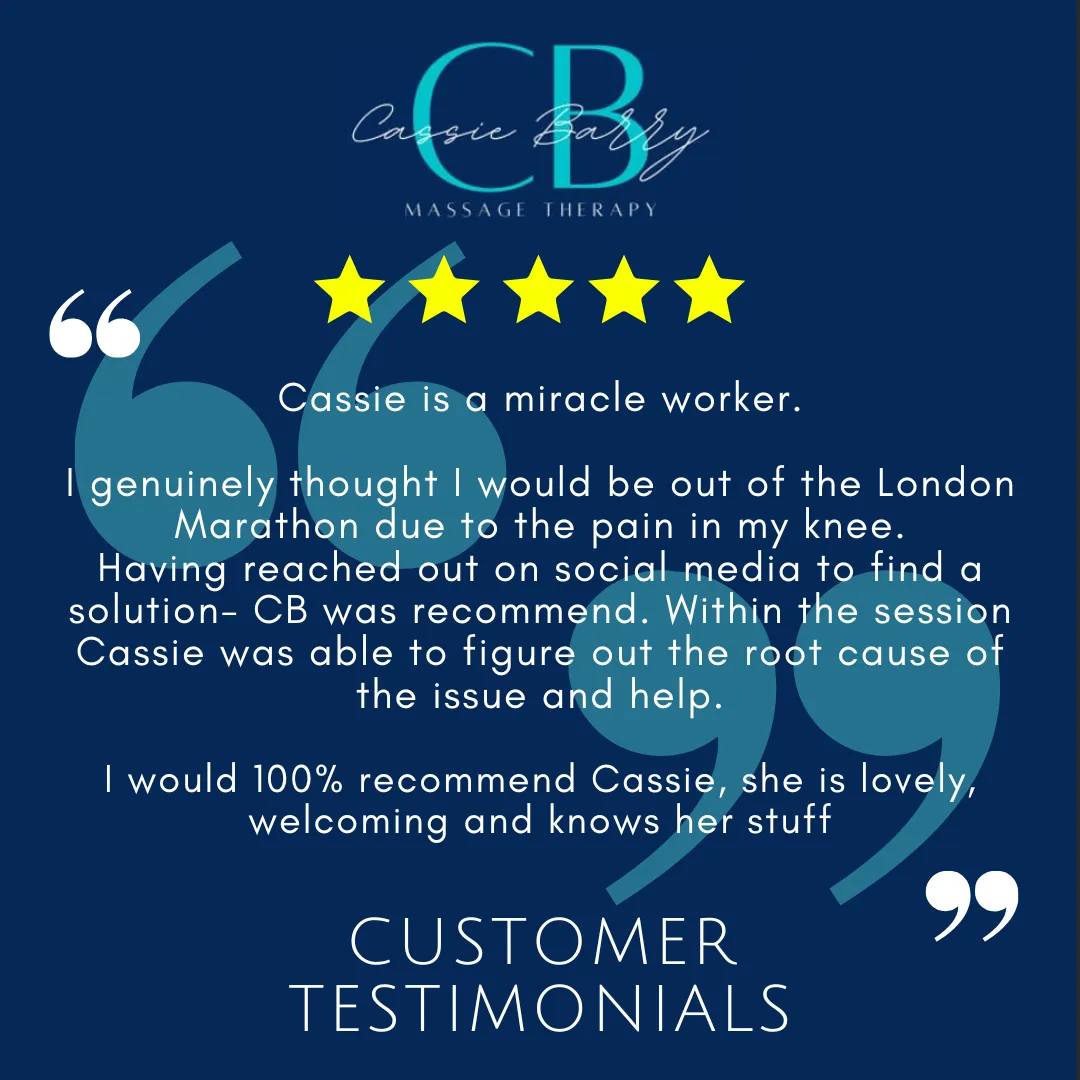

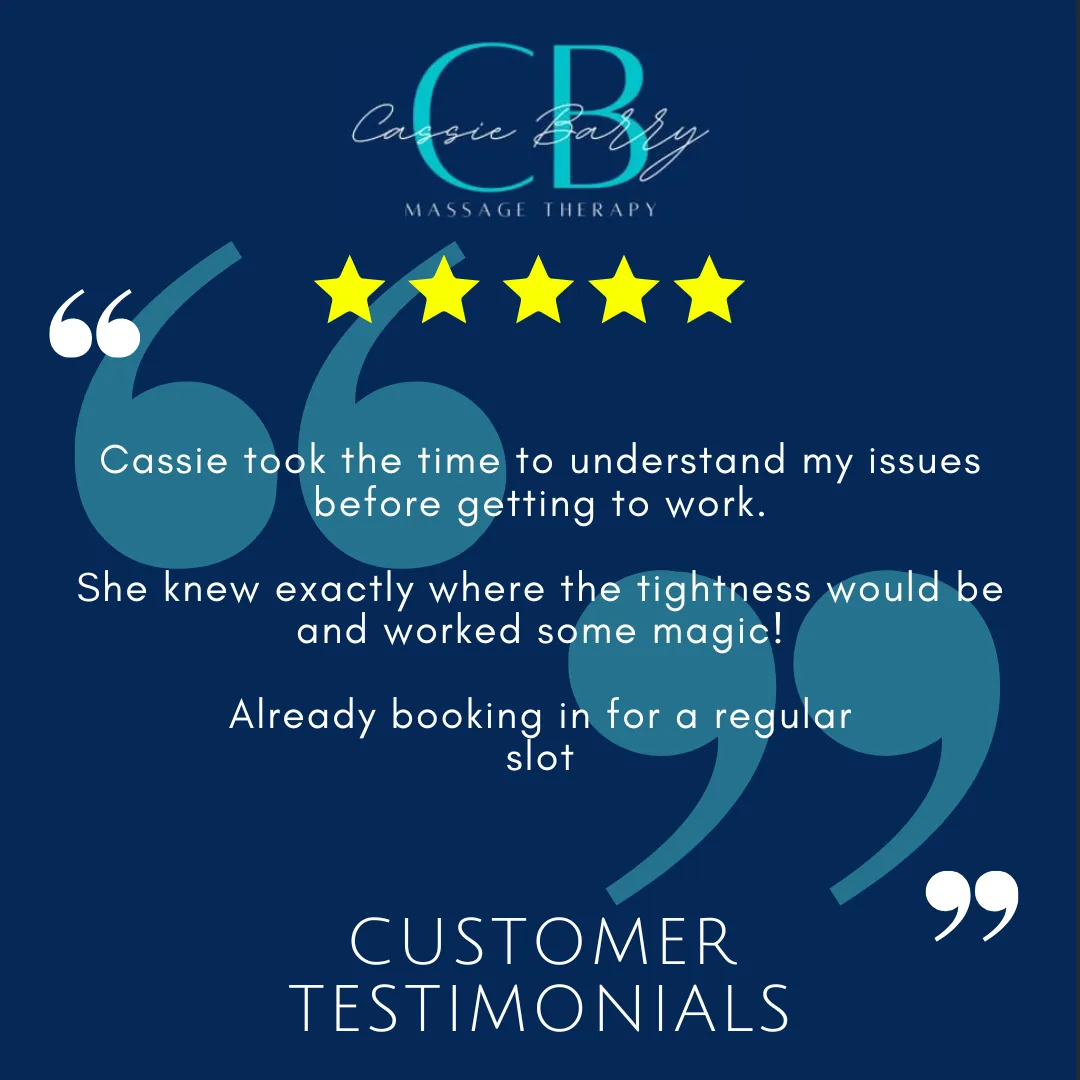
Frequently Asked Questions
What Does Hyperbaric Oxygen Therapy Feel Like?
At the start of the treatment session, oxygen immediately begins to flow, and the pressure is gradually increased. You will generally start to feel a fullness sensation in the ears, similar to ascending or descending in an airplane.
This fullness should only last about 10 minutes and our experienced Oxygen Therapy technician will guide you to relieve any ear pressure, usually by yawning or swallowing.
Once treatment pressure is reached, patients relax and just breathe normally. Near the end of the treatment session, the hyperbaric technician will gradually decrease the pressure in the chamber, a process that lasts about 10 minutes.
During this decompression stage, it is common for patients to experience a slight popping sensation in the ears as a result of the change in pressure.
Are There Any Side Effects Associated With Hyperbaric Oxygen Therapy?
HBOT is a therapy with minimal side effects and is extremely safe. The most common side effect (in 10% of patients) is mild irritation to the ears due to changes in oxygen pressure (the same risks associated with flying).
The technicians at Oxygen Room will be with you every step of the way to help prevent this from occurring, but it is advised that you don’t have therapy if you are suffering from a cold or other condition affecting your sinuses.
Other side effects may include temporary vision changes, worsening of cataract, dizziness, or light-headedness. In very rare instances, oxygen toxicity may occur, however, risk of this is mitigated by our HBOT protocols and comprehensive client screening process. A full medical history will be taken at your consultation where we can advise on side effects associated to you.
What Do I Do Inside The Hyperbaric Chamber?
Many clients sleep, watch a movie on their phones or tablets. Read a book, catch up with your emails or work. Our favourite thing is to listen to motivational podcasts
What Kind Of Hyperbaric Chambers Does Oxygen Therapy Bristol Use?
Each of our facilities uses state-of-the-art Mono and Duo hyperbaric chambers. All our chambers are built to high standards by industry professionals. These chambers are made of metal and acrylic which differ from the soft or mild variety.
Our chambers deliver 96% medical grade oxygen vs. room air (which is only about 20% oxygen) and are able to reach greater atmospheric pressure levels. This allows for the treatment of a wider variety of health conditions more efficiently and effectively. Every 6 months our equipment is serviced by our chamber engineers.
It is important to know that Portable/Canvas bag chambers are also known as low-pressure. Fabric hyperbaric chambers are authorized by the FDA only for treatment of acute mountain sickness. Fabric inflatable chambers cannot achieve internal pressures over 1.5 atmospheres and cannot be run on a BIBs breathing system.
Is There Any Preparation Required For Hyperbaric Oxygen Therapy?
We recommend that patients avoid eating or drinking (specifically carbonated beverages) directly prior to treatment, unless medically required, to avoid the need to use the restroom or cause an upset stomach during the session.
Some medications are incompatible with HBOT; a complete list of medications and supplements taken by the patient should be provided to the Oxygen Therapy team during the initial consult, and updates should always be provided.
To maximize the benefit of HBOT, smoking of any kind should be avoided during the course of a patient’s complete treatment protocol. Smoking causes vasoconstriction and accumulation of carbon monoxide and other wastes, all which are counterproductive to HBOT.
Lastly, alcohol consumption should be avoided at least 8 hours prior to treatment.
Who shouldn’t use HBOT?
There are a few contraindications to HBOT such as an untreated pneumothorax, moderate to severe COPD, bullous lung disease, and individuals currently receiving certain chemotherapeutic agents.
It shouldn't be used by people who have had recent ear surgery or injury, a cold or a fever.
During the consultation with a member of our Oxygen Therapy Team, each client is evaluated to determine whether HBOT is a safe and appropriate course of treatment.
What’s the difference between sports massage and a holistic massage?
Sports massage focuses on specific muscles and recovery from activity or injury, while holistic techniques like Indian head massage and lymphatic drainage work more gently to relax, restore balance, and support overall wellbeing.
Do I need to be an athlete to benefit from a sports massage?
Not at all. Sports massage is great for anyone with muscle tension, stiffness, or recurring aches. Whether you’re training regularly, working at a desk, or just want to improve mobility.
How long does a treatment take?
Sessions typically last between 30–60 minutes, depending on the type of massage and your needs. We’ll agree the right length at the time of booking.
Will a massage hurt?
Some techniques, particularly deep tissue or sports massage, can feel intense, but they should never be unbearable. Pressure is always adjusted to suit you, and communication during the treatment is key.
How often should I book a massage?
It depends on your goals. For injury recovery or intensive training, weekly or fortnightly may be best. For maintenance and relaxation, a session every 4–6 weeks can be enough.
What should I wear during my massage?
Wear loose, comfortable clothing. For sports or deep tissue massage, you may be asked to wear shorts or remove clothing around the area being treated, but towels are always provided for your comfort and privacy.
What should I do before and after my massage?
Wear comfortable clothing, stay hydrated, and arrive a little early to relax. After your massage, drink water, rest where possible, and avoid strenuous activity for the rest of the day.

COMPANY
LEGAL
ACCREDITATION

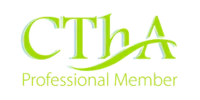


FOLLOW US
Copyright 2025. CB Massage Therapy. All Rights Reserved.